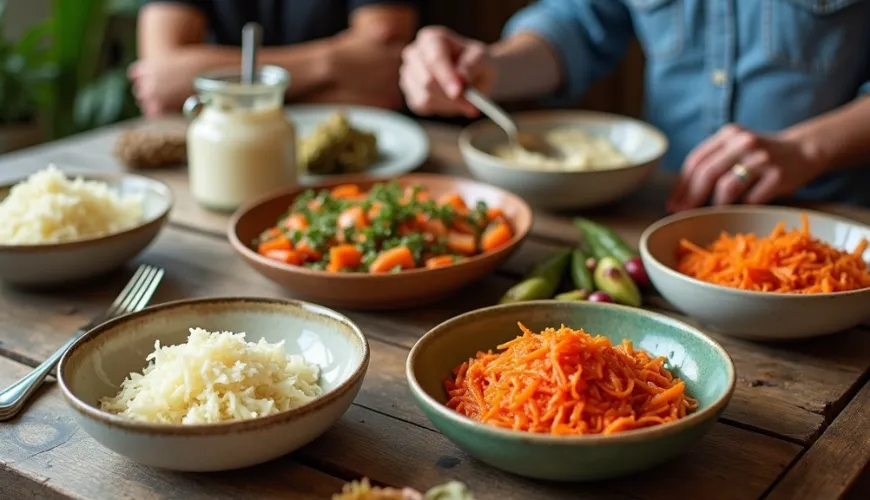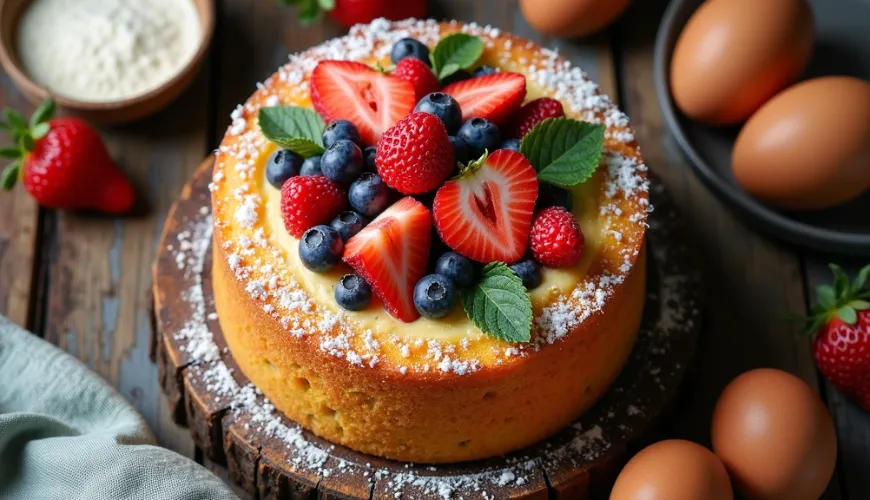
How to Bake a Fluffy Sponge Cake and Impress Others

Fluffy Sponge Cake - A Sweet Summer Memory That Belongs in Every Kitchen
There are recipes that survive generations. Not because they are complicated or extravagant, but quite the opposite – their charm lies in simplicity, the scent of childhood, and irresistible taste. Fluffy sponge cake is one of these treasures of Czech cuisine, baked in various forms for decades. It's not just an ordinary dessert – it's a sweet reminder of summer, grandma's oven, and juicy garden fruits.
What Makes Sponge Cake Really Fluffy?
When you say sponge cake, most people imagine a light, soft cake full of fresh fruit that literally melts in your mouth. But not every sponge cake is the same. The key difference is in the batter – and it's the sponge batter that brings the desired delicacy and airiness into play.
Sponge is made without baking powder, yet it achieves amazing fluffiness. The trick lies in properly whipped eggs. Yolks are usually beaten with sugar into a foam, while whites are whipped separately into a stiff snow. Then everything is gently combined with dry ingredients. Once you pour this batter into a mold and lay fruit on top, the magic begins.
And it's this combination of the lightness of the batter and the juiciness of the fruit that makes sponge cake a unique dessert. It's no wonder that they say the best sponge cake is the one that resembles a cloud – soft, fragrant, with a crispy edge.
Fruit: Not Just Cherries and Sour Cherries
Traditionally, sponge cake is baked with cherries or sour cherries, mainly due to their seasonal availability during the hot summer months. But there are many more options. It tastes great with apricots, blueberries, currants, raspberries, or even plums. Some even add pieces of apples or pears to the batter if there's no other fruit on hand.
For example, a family from South Bohemia bakes sponge cake almost every weekend in July. On Saturday morning, they head to the garden, pick a bowl of raspberries, blueberries, and a few overripe apricots, and return home where the oven is preheated and the recipe is ready. The children help layer the fruit on the batter, and the house smells of sugar, butter, and summer fruit all afternoon.
The freshness of the fruit plays a key role – the riper and juicier it is, the more flavor it brings to the cake. And if it's autumn or winter? Even frozen fruit serves well, just dust it lightly with flour so it doesn't sink to the bottom during baking.
How to Bake the Perfect Sponge Cake?
You can find dozens of sponge cake recipes online – with butter, without butter, with milk, or completely vegan. But if you're looking for the truly fluffy sponge cake, stick to a few basics:
- Use eggs at room temperature – they whip better and the batter will be more stable.
- Separate yolks and whites – whip the whites into a stiff snow and fold them in last.
- Beat sugar and yolks for a long time – until the mixture pales and increases in volume.
- Sift the flour – it removes lumps and adds more air to the batter.
- Let the batter rest for a while – just before adding fruit, let it sit for 5–10 minutes.
And although classic sponge cake contains no fat, many add a bit of melted butter for a gentler taste. Others lightly sprinkle it with crumble or vanilla sugar for a crispy surface. Creativity knows no bounds.
"The truly best sponge cake is the one made with the joy of baking for others," says food blogger and cookbook author Karolína Fourová.
Sponge Cake as a Symbol of Home
Some desserts have a special power – just one bite, and you are transported back in time. Sponge cake is precisely this type of dessert. Maybe you ate it at grandma's cottage with a mug of cocoa. Maybe you took it in a box on a forest trip. And maybe you baked it for yourself as a way to return to childhood.
This simplicity and nostalgia make it a timeless dessert. It doesn't take hours in the kitchen, no special equipment is needed. Just a bowl, a whisk, a few eggs, and a little flour. Yet this humble cake can rival the most complex cakes. It's a cake that smells like home.
Moreover, it's an ideal way to use up excess fruit and involve children in baking. They will enthusiastically arrange strawberries or blueberries, and you will gain help and fun in the kitchen. The result is not only a delicious dessert but also shared time together, which is worth more than any cake from a patisserie.
Sustainable Approach in the Kitchen? Even Sponge Cake Can Be Eco
In a time when more people are thinking about what they eat and where ingredients come from, a sustainable way of baking is gaining prominence. And sponge cake fits beautifully into this philosophy. By using local, seasonal fruit, organic free-range eggs, or whole-grain flour, we reduce our ecological footprint without compromising taste.
Many have also embraced plant-based alternatives – like whipped aquafaba instead of egg whites, almond milk, or coconut sugar. Even without animal products, a great, fluffy sponge cake can be conjured that pleases everyone – including those with allergies or lactose intolerance.
And what's more – if you bake using reusable molds, use wax wraps instead of foil for packaging, or buy ingredients without packaging, you give baking a new dimension. One where sweetness is not only on the tongue but also in the way of life.
When you say "sponge cake" today, most people think of more than just a cake. It's a return home, to kitchens where laughter, fragrance, and life happen. Whether you bake it according to your grandma's recipe or create your own version with raspberries and a pinch of cinnamon, one thing remains certain – fluffy sponge cake never disappoints. It's simple, heartfelt, and always welcome.

